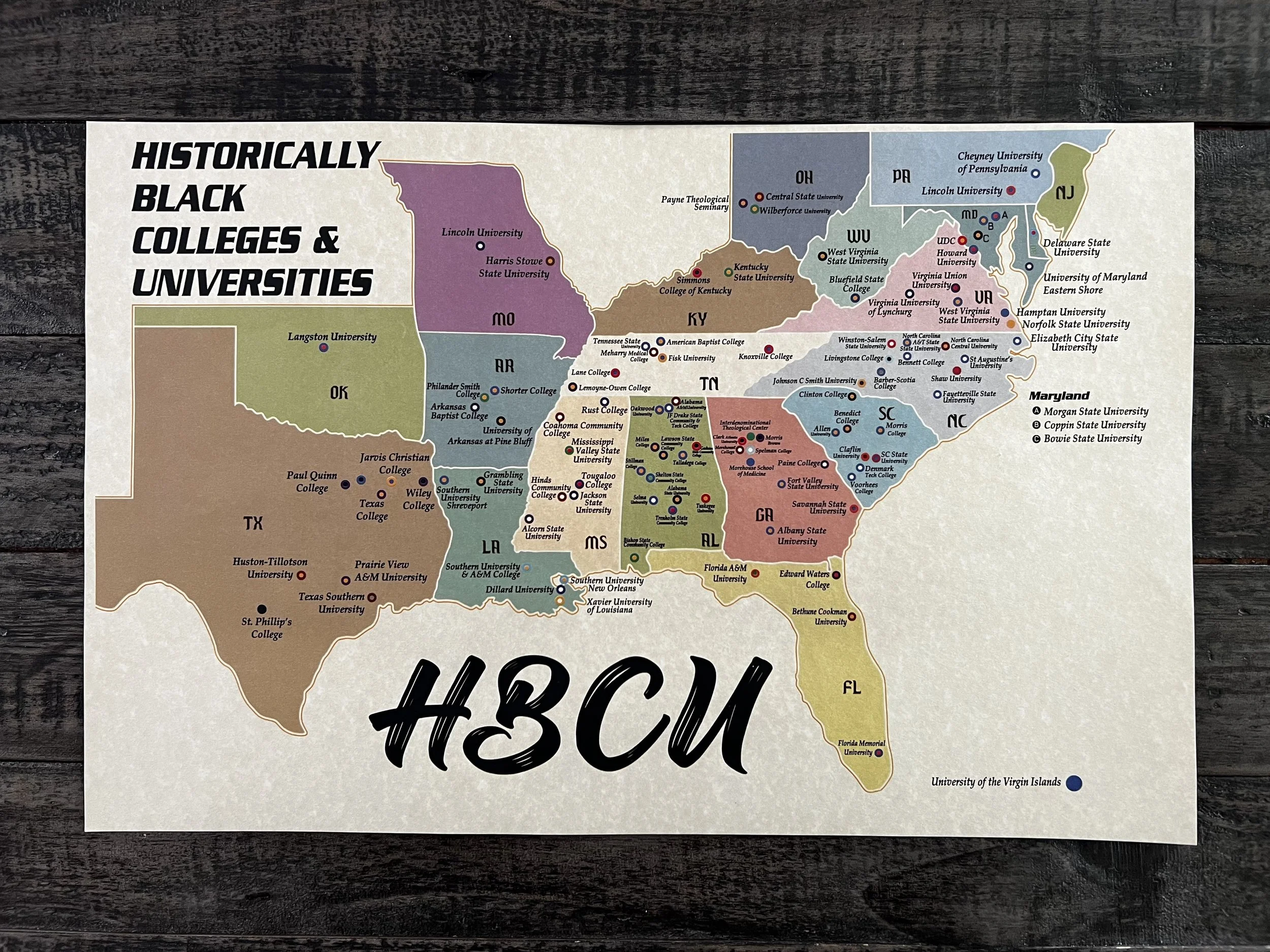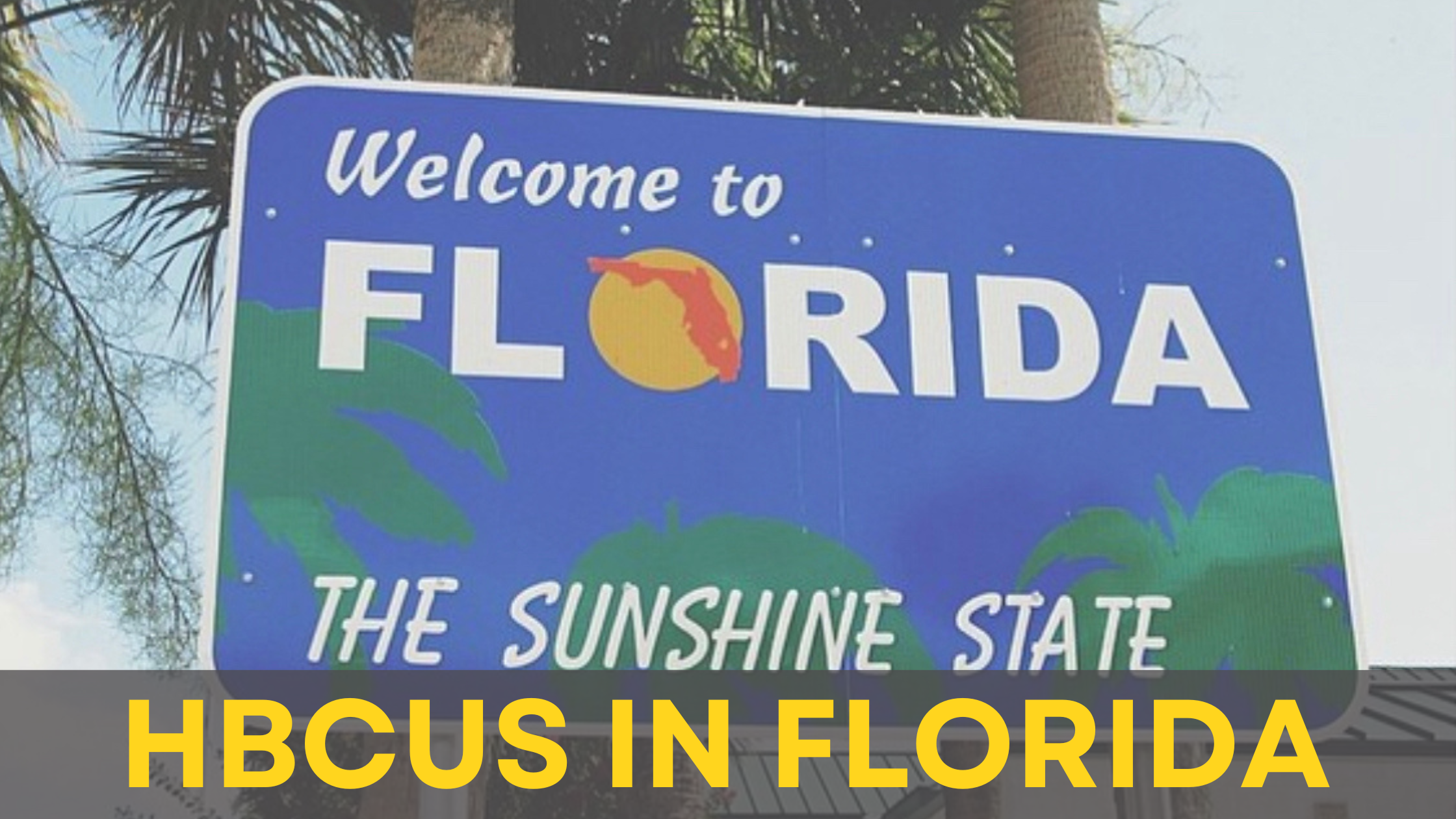The Most Comprehensive HBCU Map
The History of HBCUS
From 1829-1847, Georgia, Louisiana, North Carolina, Alabama, Virginia and Missouri passed anti-literacy laws that made it illegal to teach black people how to read and write. In 1835, Oberlin College in Ohio was the first college to admit black students. On February 25, 1837, Cheyney University of Pennsylvania became the first Historically Black College and University (HBCU).
The History of Maps
The first known map of the world was created on a clay tablet around 600 B.C. in the ancient city of Babylon. Since then many maps have been created of cities, states, countries, continents and historical landmarks. Maps have evolved from being written on clay tablets to paper to being depicted and disseminated digitally.
Why Do Maps Need To Be Updated?
When the first maps were created, they depicted the earth as being flat. As explorers and scientists learned more, maps had to be updated to account for the new information that the world was indeed round. The same is true for modern maps. As we gain more knowledge and understanding, maps have to continually be updated to stay up to date with the information we have available.
How Many HBCUS Are In The United States?
There are currently 107 HBCUS in the United States of America. An HBCU is defined as a college or university founded prior to 1964 whose principal mission is to educate African-Americans.
What Was The First HBCU?
The first HBCU was Cheyney University of Pennsylvania. It was founded on February 25, 1837. Richard Humphreys is credited for founding Cheyney University of Pennsylvania because in his will he requested that $10,000 of his estate go to establishing a college to educate African-Americans. Before Humphrey’s death in 1932, he changed his will to include this request after the race riots of 1829 in Cincinnati, Ohio and Philadelphia, Pennsylvania.
Why Have Some HBCUS Closed?
Historically Black Colleges and Universities have historically been underfunded. Oftentimes, HBCUS are systematically underfunded by the state. Unfortunately, this has led to the closing of many HBCUS. These HBCUS have closed.
All The HBCUS In America
Currently there are 107 HBCUS in America. Here is a list of the HBCUS in America.
Why Is It Important To Have a Map of HBCUS?
Oftentimes, people are unaware where HBCUS are located. A map of HBCUS illustrates to parents, students, graduates and counselors where all the HBCUS are. A map of all the HBCUS in America also looks good as wall art at home or in the office. Not to mention how good of a conversation starter it is.
How Have HBCU Maps Changed Over The Years?
Over the years Historically Black Colleges and Universities have opened, grown, changed names and merged. Some have even closed and reopened. What has remained is the fact that HBCUS have been centers of excellence for hundreds of years.
Where Are HBCU Colleges On The Map?
Most HBCUS are in the southeast. Alabama and North Carolina have the most HBCUS. There is even an HBCU in the Virgin Islands.
Is There A Map Of HBCU Colleges That Have Closed?
Many HBCUS have closed over the years for various reasons. Some have closed and reopened. Here is a list of HBCUS that have closed.
The Official Map Of HBCUS In The United States
The official map of Historically Black Colleges and Universities is a hand-drawn map. It is an educational piece while also being a beautiful piece of art. It’s 11x17 and comes on aged parchment paper giving it a beautiful look. It is a great piece to add to a home, office, room or dorm. The map is delivered in a shipping tube protecting the map and keeping it in good shape. It does not come with a frame. If you wish to frame it you will have to buy a frame separately.
All HBCUS On A Handmade Map
All the HBCUS are listed on the HBCU map. You can purchase it here




